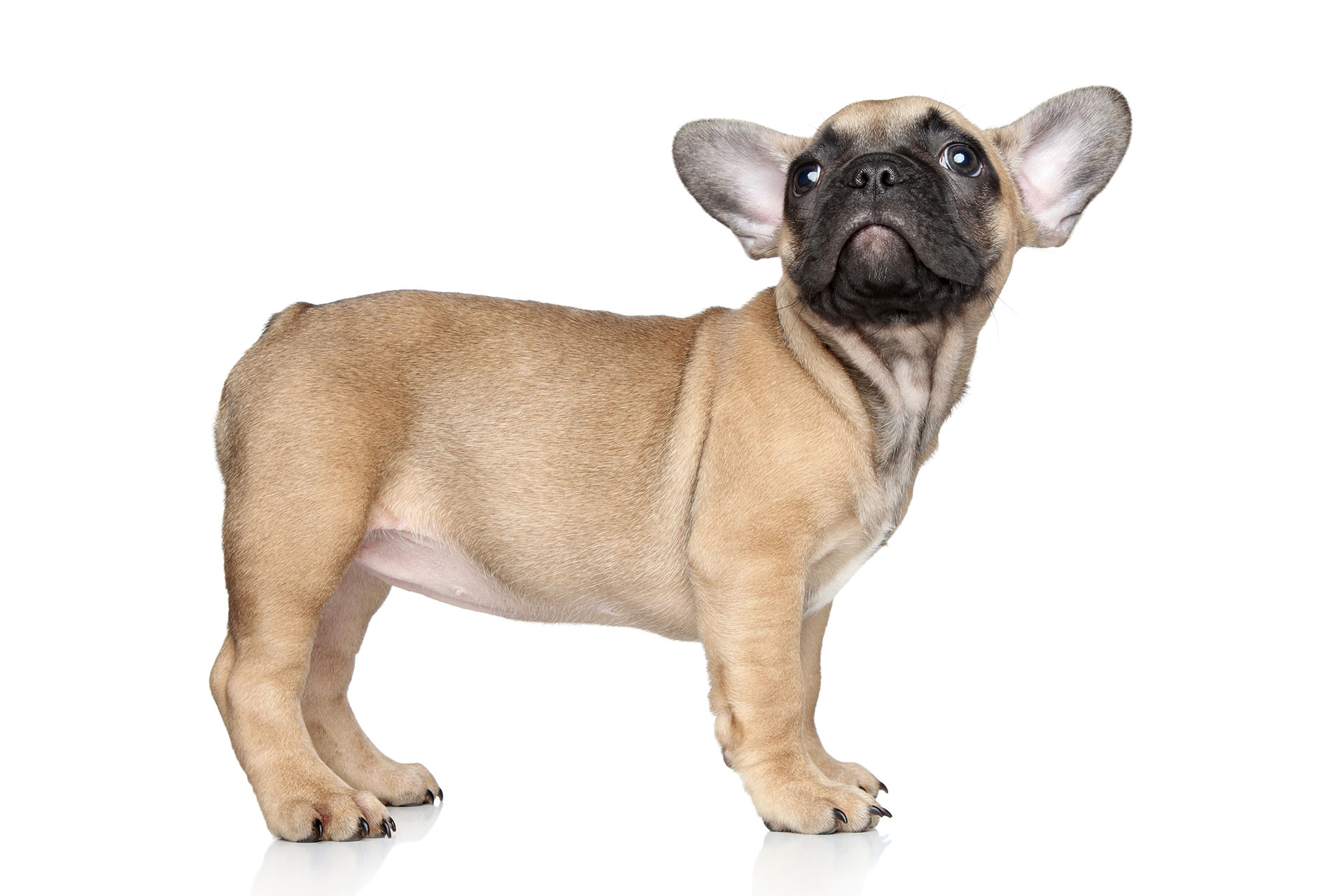
French Bulldog Breed Characteristics
Thinking about bringing home a French Bulldog? Frenchies are unique and loving pups but they require more care than other breeds thanks to their unique physiology. Here’s an overview of French Bulldog breed characteristics including information on the typical French Bulldog lifespan.
General Temperament of a French Bulldog
The general temperament of a French Bulldog is extreme loyalty and a loving nature. As they were bred as lap dogs, they are always friendly to their family and very willing to please, and love nothing more than curling up for a nap on your lap.
In spite of their relatively small size, the French Bulldog has the active mind of a larger dog, and despite their comparatively easy going appearance, they are still intelligent creatures, requiring plenty of mental stimulation.
As with larger breeds of dog, French Bulldogs benefit from having structured, positive reinforcement training from a young age. It’s important to make sure they are well socialized, and comfortable with meeting lots of new and different people, especially children, as they can otherwise grow to display assertive behaviour towards visitors and strangers.
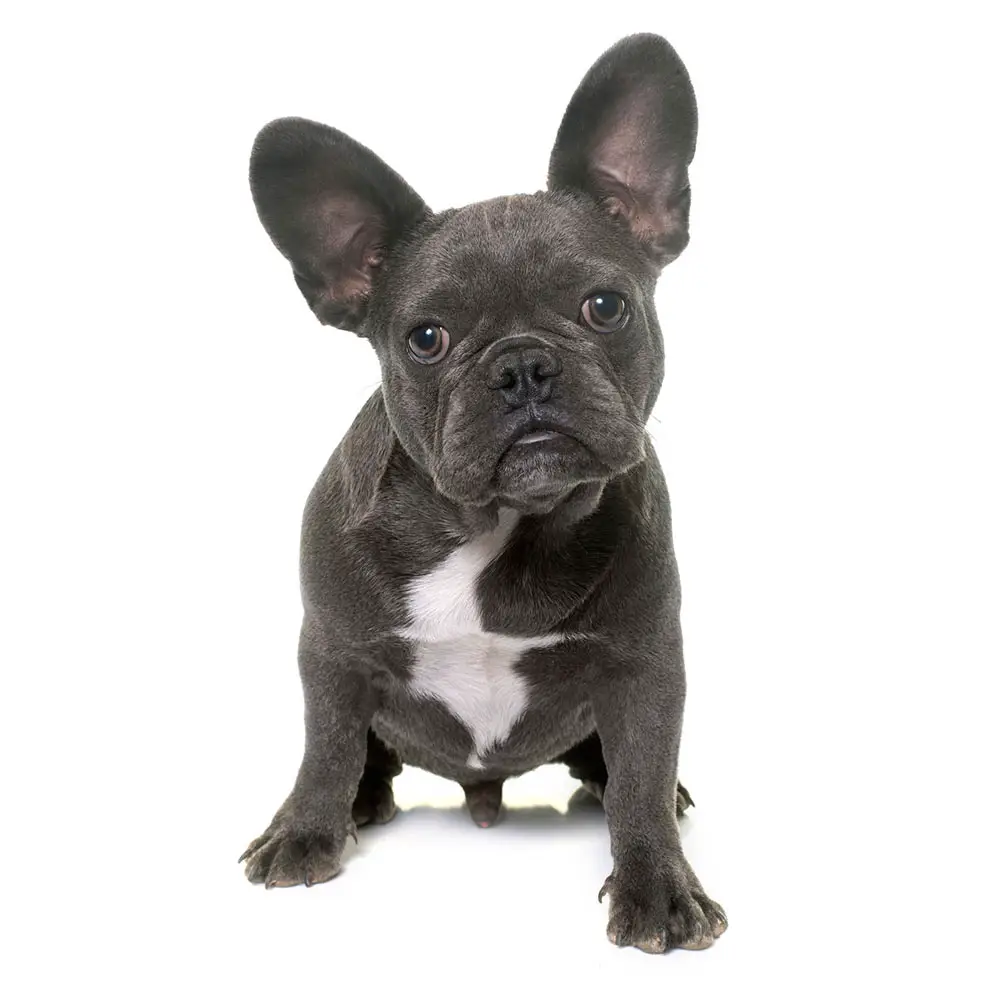
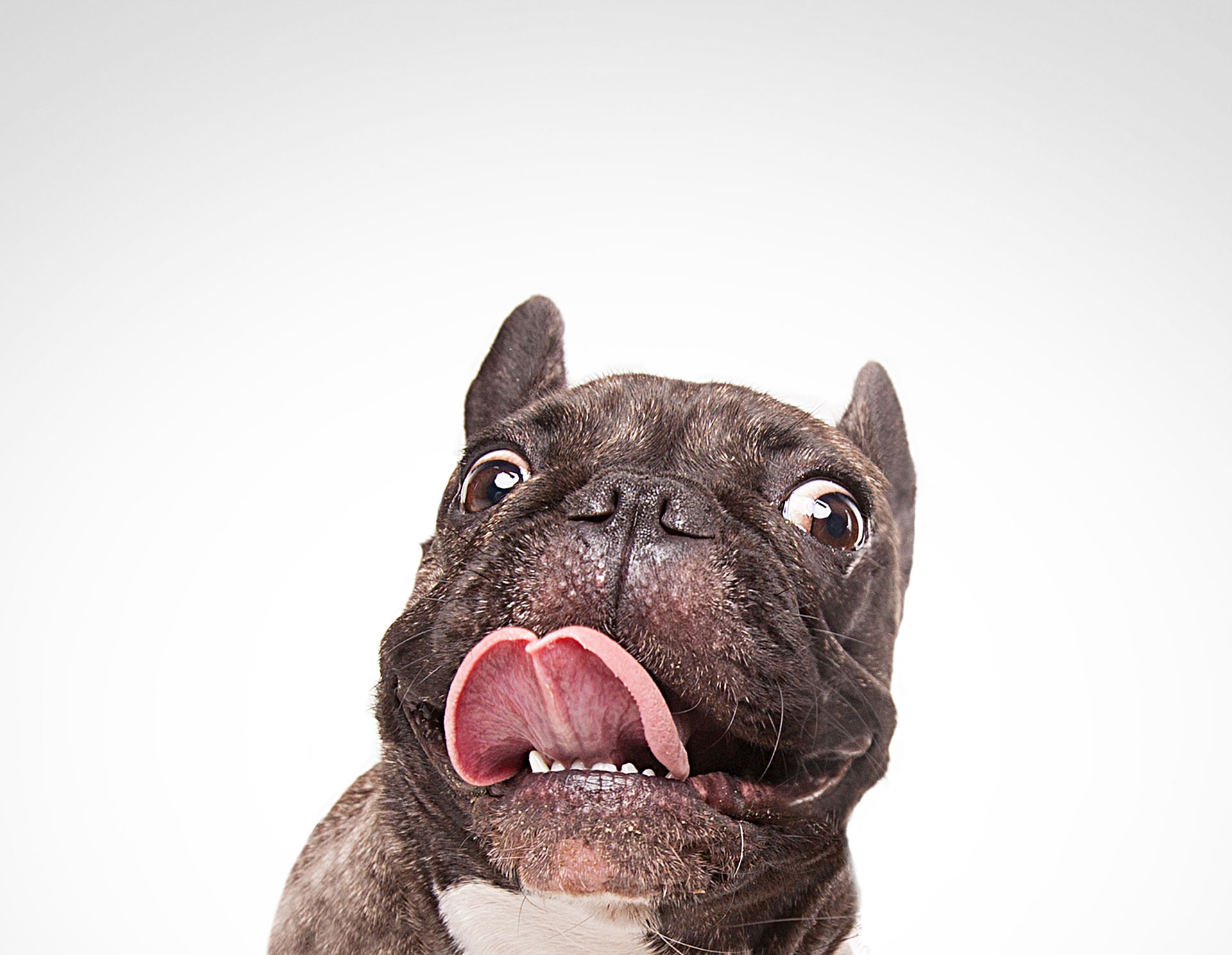
How Much are French Bulldogs?
The age-old rules of supply and demand play just as large a part in the doggy world as they do the rest of it. Due to their popularity and their difficulty to breed – often times French Bulldogs are unable to give birth naturally, leading to rather costly caesarean birth operations – French Bulldogs often come with a hefty price tag.
Other factors can also increase their price such as the breeder having fed the puppies higher-quality food.
On average, the French Bulldog price can range from $1,500 to $3,000 when purchased from a respectable breeder.
French Bulldog Appearance
There are few dogs quite so iconic as the French Bulldog with its short nose, soulful expression, and large, almost bat-like ears. Adult French Bulldogs have distinctive broad chests and narrow hips giving them very stocky and short statures. The average French Bulldog is not be much taller than 12 inches and weighs somewhere around 25 pounds. The French Bulldog can be most recognized, however, by its characteristically wrinkly face and pouty top lip.
You can recognize an adult French Bulldog from an English Bulldog thanks to their size and build differences. English Bulldogs are larger with folded ears rather than the large, bat-like ears of a French Bulldog. English Bulldogs also tend to have more energy and weight around 50 pounds.
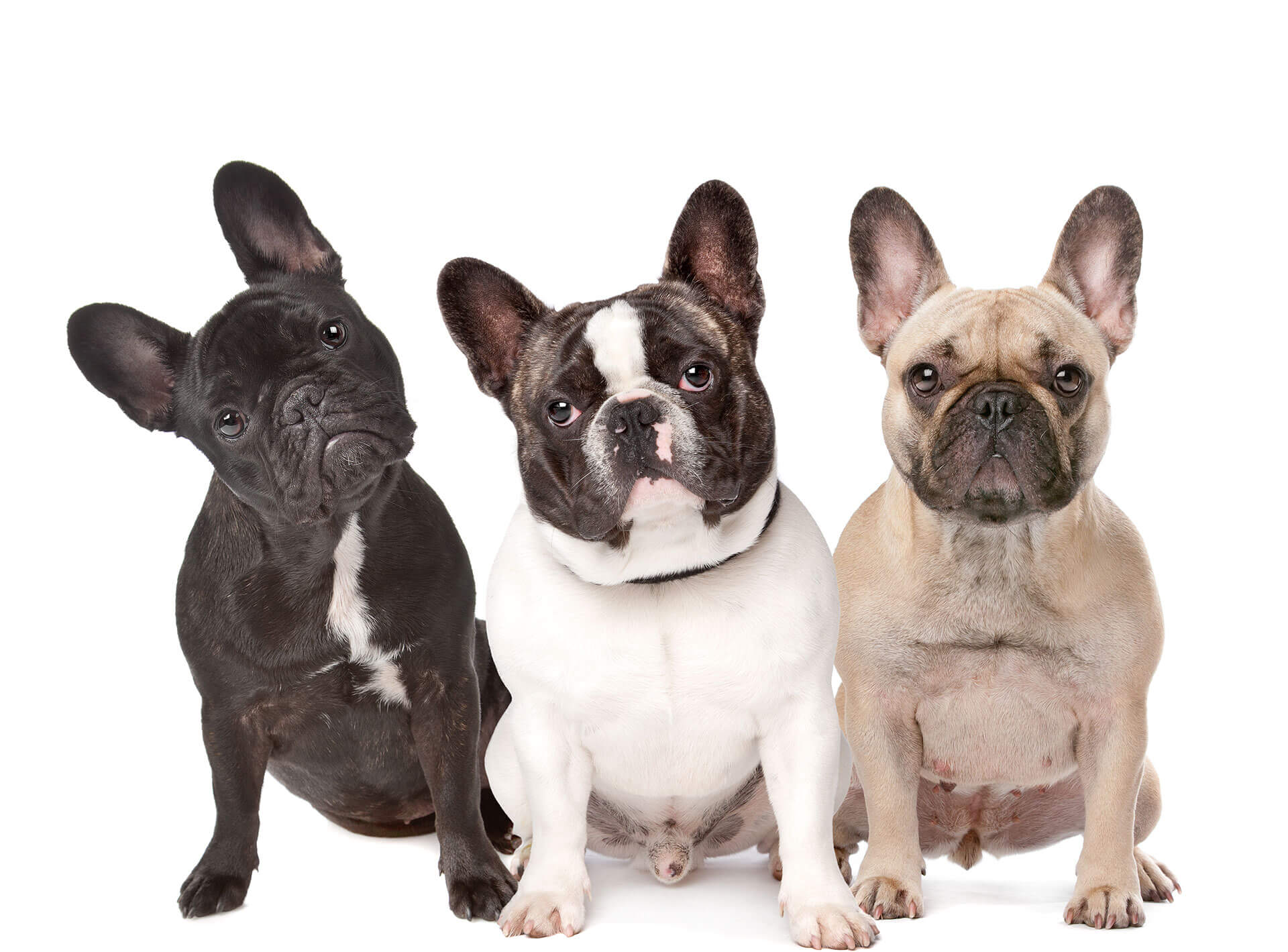
Color wise, the French Bulldog is broken down into three main categories – Brindle French Bulldogs, Fawn French Bulldogs, and Pied French Bulldogs.
Brindle French Bulldogs feature a mix of black and fawn hairs, and while they may also have a few white hairs too, the black and fawn hairs will cover the vast majority of their bodies.
Fawn French Bulldogs are entirely fawn coloured, with the exception of the face, which in many cases can be black.
Pied French Bulldogs are mainly white, with the occasional fawn or brindle coloured patches.
All French Bulldogs, no matter the color, feature something of a black ‘eyeliner’ circling the rims of their eyes, black lashes, and black lips.
It is possible to find French Bulldogs in a variety of other colors, such as black and white, plain black, black and tan or even blue, in a whole range of patterns and markings. Despite being very popular, these colours and combinations are not considered acceptable to industry standards, and there have been several links made between blue French Bulldogs and poor health.
French Bulldog Life Expectancy
As a general rule, French Bulldog lifespan is about 10 to 14 years. This is relatively moderate when compared to other small breeds. Frenchies with severe breathing problems or other health issues may not reach life expectancy without surgical intervention, however.
French Bulldog Health Issues
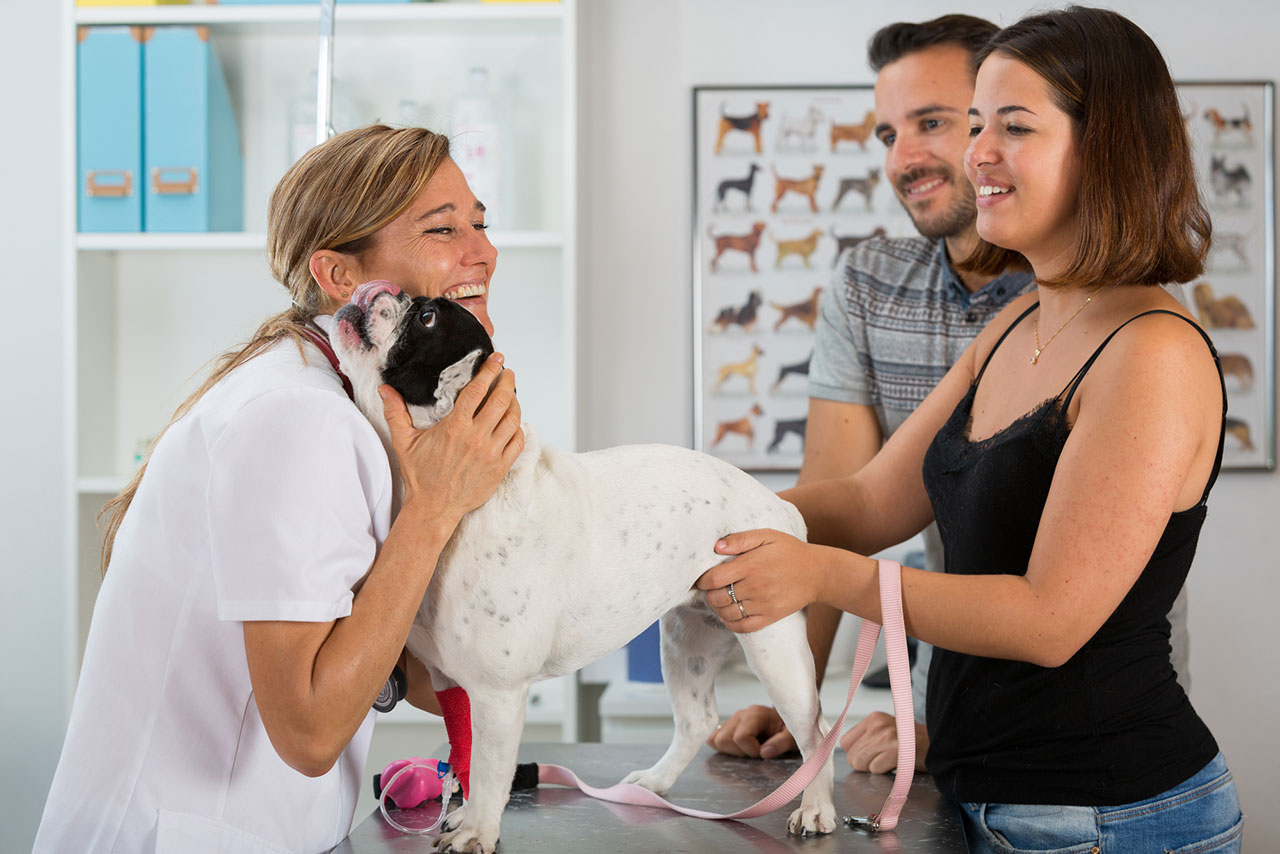
As an owner of a French Bulldog, you should make sure to take them for regular eye checks, as hereditary cataracts can sometimes be an issue.
A disease called Von Willebrand’s Disease, similar to haemophilia in humans, is also something French Bulldogs have been known to suffer from.
French Bulldogs can also suffer from hip dysplacia, but hip scoring is an available procedure that can assist with this.
Unfortunately, there are some other issues that area so entrenched within the breed’s body structure that there is no way to avoid them. The following are some of the more major issues that you should be aware of with regards to French Bulldog health issues:
French Bulldog Dwarfism
Chondrodystophy is a form of dwarfism that all French Bulldogs suffer from. It creates features that are all deemed to be desirable by breeders, but this characteristic appearance does, however, come at a price.
Several issues including oversized heads, back problems, and malformed hips can be caused by chondrodystophy. Having an oversized head in conjunction with a narrow pelvis is one of the foremost reasons why so many French Bulldogs are incapable of giving birth naturally.
Chondrodystophy will also see malformed spinal bones – hemivertebrae – and premature disc degeneration becoming prevalent in the breed.
All French Bulldogs will have this type of dwarfism, and issues with chondrodystophy are impossible to avoid when selecting a French Bulldog puppy.
Screw Tails
The standard guidelines set out for the French Bulldog breed call for their tails to be short and undocked. And with short tails come problems, especially when they come in the form of screw tails.
Screw tails can bring all sorts of spinal issues and defects. These problems can be very severe, causing problems with mobility, and can even lead to impacted anal glands due to duct compression. It’s important to check and make sure that any French Bulldog puppy you are buying came from parents with protruding tails, and to ask the breeder about any history of mobility, back or anal gland related issues.
If you get a Frenchie with a screw tail or curly tail, take extra care to check the tail area after they go potty. You’ll probably need to clean the tail area frequently to reduce the risk of infection and smells. These hypoallergenic grooming wipes make the task faster and easier.
Flat Faced French Bulldogs
One of the biggest drawing points to owners of French Bulldogs is their flat faces. The position of their eyes and shorter muzzles can appear to give them something of a more human, baby-like appearance. Their faces have not evolved naturally in this way, but instead are a purposeful result of breeding with dogs featuring increasingly smaller and smaller muzzles. This lack of a pronounced muzzle has become more severe over the last century and comes with serious health risks.
The term ‘brachycephalic’ refers to the condition of having a flat face. Brachycephalic puppies will possess short facial bones, yet still have the same amount of facial tissue as dogs with more normal length muzzles, leading to an over abundance of tissue within the dog’s mouth, much more than the muzzle has the space for. In many cases, the dog’s palate may so severely block the airway that surgery is required to save them from respiratory difficulties.
This can also lead to issues with the eyes, since the proportions of the skull won’t properly be able to accommodate the eyeballs, leading to improper hydration of the eyes and the formation of corneal ulcers.
You may also notice that the nostrils of a French Bulldog are barely noticeable. If you’ve ever wondered how they breathe, the answer is actually not very well. With such small nostrils, or “stenotic nares,” French Bulldogs are unable to properly oxygenate themselves or cool themselves down. What many people think of as the cute, stuffy noises made by French Bulldogs are actually a result of their inability to breathe efficiently.
Because French Bulldogs have so many problems with breathing easily — especially during walks and exercise — it’s a good idea to invest in a high-quality dog backpack like this one from K9 Sport Sack. Your Frenchie won’t be up for long walks and may need to be carried if they get winded.
Cherry Eye
Cherry eye is a condition any dog can suffer from, and occurs when a fibrous membrane, located in the lower inside corner of a dog’s eye, becomes weak or disconnected, and allows the membrane to jut out from under the dog’s eyelid. The condition gets its name from this looking something akin to a cherry. While this is not fatal or lethal, it can cause extreme discomfort, and often dogs will claw at their eye and produce corneal ulcers.
It is not well known what causes the condition, with many speculate that genetics plays a large hand. However, it’s easily treated through either surgical or non surgical methods.
Along with cherry eye, French Bulldog puppies are susceptible to other eye related health issues, such as juvenile cataracts and entropion. This is when the eyelid edges roll inward, and the severity of the condition will be in direct correlation to just how much skin and wrinkles are present on the Frenchie’s face. The inward folds of the eyelids and the connected eyelashes will rub on the puppy’s cornea, creating an incredibly uncomfortable ulcer. In mature French Bulldogs, surgery would then be required to remove a narrow section of skin from beneath the eyelid, to then be stitched back together in order to revert the eyelid to its normal position.
On top of all the potential health concerns, as brachycephalic dogs the French Bulldog physiology makes them notoriously difficult for veterinarians to intubate. If they need to undergo surgery and are required to be anesthetized, this can make life incredibly difficult.
